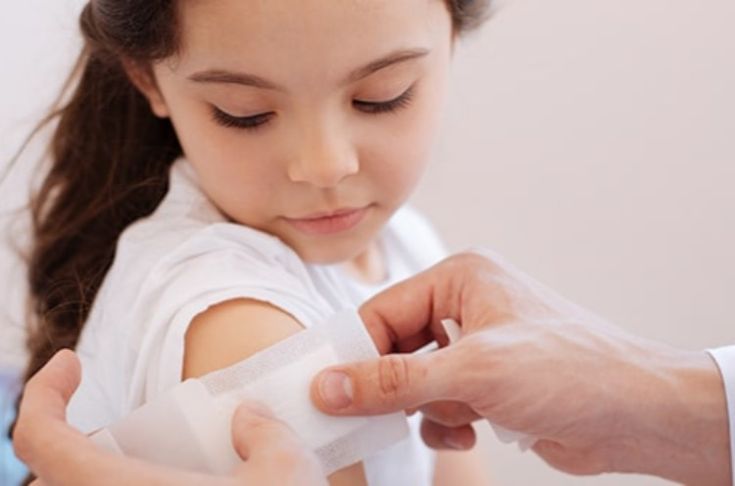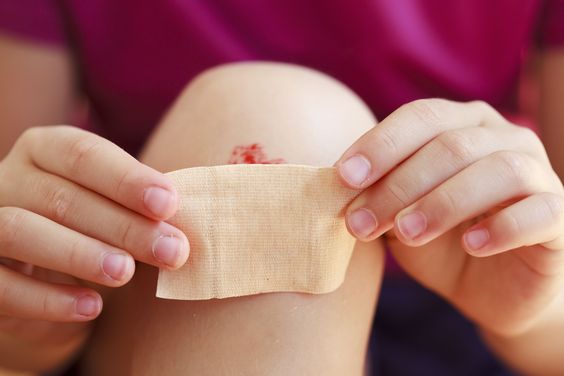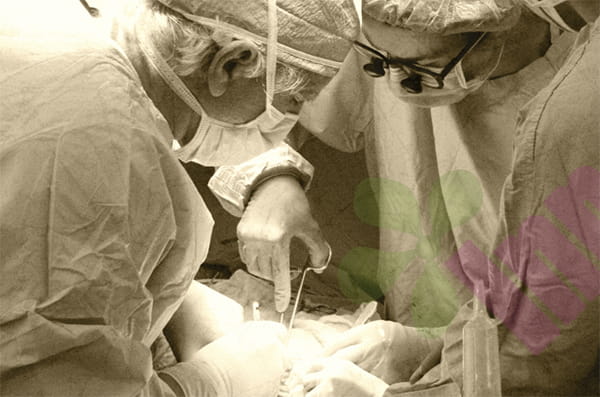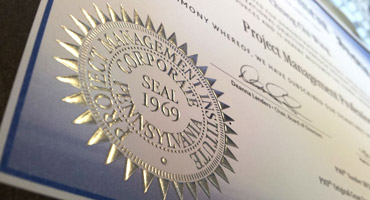Every child has bumps and bruises on their way to growing up, but when wound treatment is upgraded from experience to scientific care, we can build a more solid protective wall for young lives. As parents, mastering the following four types of common accidental first aid knowledge can not only make wound healing more efficient but also avoid the hidden worries caused by secondary injuries.

Myth 1: If a bump appears on your head, rub it hard
When a child bumps a goose egg-sized lump on the back of his head, his first reaction is often to rub it. This subconscious action is dangerous - rubbing will accelerate the rupture of capillaries, causing the hematoma that should have been limited to spread into a bruise the size of a "ping-pong ball".
Correct handling :
Ice compress period (0-24 hours): Wrap a towel in a freezer bag filled with milk or a professional ice pack and apply for 15 minutes every 2 hours. Cold compress at this stage can shrink blood vessels and reduce tissue fluid exudation. Clinical data show that standardized cold compress can increase the absorption rate of hematoma by 40%.
Observation period (24-48 hours): If the lump does not continue to grow and the child does not have symptoms of vomiting and lethargy, you can switch to hot compresses. A warm towel at about 40°C can dilate blood vessels and accelerate the discharge of metabolic waste. It is worth noting that if any of the following symptoms occur, you should seek medical attention immediately: persistent headache, unequal pupils, and frequent vomiting.
Myth 2: Using folk remedies to treat burns
When accidents like the hot soup in the kitchen spilling or the hot water tap in the bathroom accidentally being touched happen, please remember the five-step method of "rinse-drain-soak-cover-send":
Flushing and cooling: Immediately flush with 15-20℃ running water for 20 minutes. This temperature can effectively reduce the temperature and avoid frostbite. Studies have shown that timely flushing can reduce the depth of the wound by Ⅰ degree.
Safe undressing: If clothing is stuck to the wound, do not pull it hard. Use scissors to cut it along the edge, leaving the stuck part for professional treatment.
Soaking analgesia: Soak the burned area in cold water for 15-20 minutes, paying special attention to protecting the extremities such as fingers and toes.
Sterile covering: Use hydrogel dressing or plastic wrap to lightly cover the wound, and avoid using cotton cloth or other materials that are easy to shed. Here is a counterintuitive knowledge point: Third-degree burns actually reduce the pain because the nerve endings have been damaged. Parents must not take it lightly just because the child is not crying. Send the child to the hospital immediately.
Myth 3: When you have a nosebleed, tilt your head back to reduce blood flow
80% of preschoolers have experienced nosebleeds, but improper treatment may cause choking or even suffocation. When nosebleeds come out, do this:
Posture management: Let the child sit upright and lean forward about 45 degrees. This angle can prevent blood from flowing back and facilitate the observation of bleeding.
Precise compression: pinch the alar cartilage (equivalent to the lower end of the nose bridge) with your thumb and index finger, and continue to press for 5-10 minutes. This position corresponds to the branch of the alar artery, and the compression effect is better than simply pinching the nose tip.
A cold compress can enhance the effect: Use a cold wet towel to apply a cold compress to the back of the neck to reduce bleeding through vasoconstriction. If unilateral nostril bleeding continues for more than 20 minutes, or if frequent nose bleeding occurs (≥3 times a week), it is recommended to check for blood system diseases.

Myth 4: Spray alcohol on wounds after abrasions
Rinse with saline: Use a syringe to draw 0.9% saline and rinse the wound at a 30° angle. This can both remove foreign matter and avoid the severe pain caused by alcohol stimulation.
Precise disinfection with iodine: Dip a sterile cotton swab in iodine and draw a circle from the inside to the outside with the wound as the center for disinfection, with the range exceeding 5cm from the wound surface. Be careful not to apply repeatedly to avoid damaging the new tissue.
Dressing selection: Ordinary abrasions can be treated with breathable sterile gauze; silicone gel foam dressings are recommended for joints, as their microporous structure can absorb exudate and reduce scar hyperplasia. For hypertrophic scars that have already formed, scar patches containing medical silicone ingredients can be used continuously for 3-6 months.
From the microscopic perspective of wound healing, every standardized treatment sends a "safety signal" to the body. When the low temperature of a cold compress activates the fibrinolytic system, and when iodine tincture accurately kills pathogenic bacteria, what we see is not only the healing of wounds but also a growth experience for children's immune systems. It is recommended that every family prepare a mini first aid kit (ice pack, saline, iodine tincture cotton swab, sterile dressing) to use scientific knowledge to escort children's exploration journey. Remember, correct first aid is not over-medicalization, but to create the best conditions for the self-healing power of life.
For more information on Innomed® Silicone Scar Dressing, Refer to the Previous Articles. If you have customized needs, you are welcome to contact us; You Wholeheartedly. At longterm medical, we transform this data by Innovating and Developing Products that Make Life easier for those who need loving care.
Editor: kiki Jia

 English
English عربى
عربى Español
Español русский
русский 中文简体
中文简体








